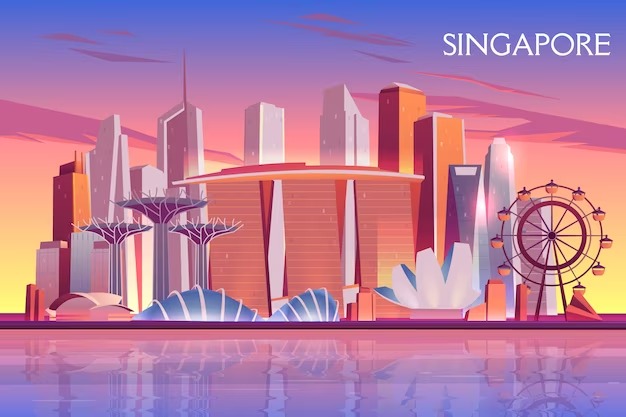The Role of Design & Art in the Singaporean Market: Aesthetic Appeal and User Experience

In today’s competitive business landscape, effective branding goes beyond just a catchy logo or a memorable tagline. It encompasses a holistic approach that integrates design, art, and user experience to create a lasting impact on consumers.
Nowhere is this more evident than in the vibrant and dynamic market of Singapore. This article delves into the multifaceted role of design and art in the Singaporean market, emphasizing the significance of aesthetic appeal and user experience, while also highlighting the growing integration of technology.
Design as a Branding Pillar:
Singapore, often regarded as a global business hub, thrives on innovation and creativity. The incorporation of design principles into branding strategies is not merely a choice; it is a necessity. The visual identity of a brand significantly influences consumer perceptions and loyalty.
From the elegant storefronts on Orchard Road to the minimalist packaging of local products, design speaks a universal language that resonates with consumers. It’s not just about making things look visually pleasing, but also about communicating a brand’s ethos and values.
Aesthetic Appeal that Resonates:
Aesthetics play a pivotal role in Singaporean consumer culture. The multicultural tapestry of the nation is reflected in the diverse range of design styles present in the market. Whether it’s the traditional motifs of Peranakan art or the sleek modernism of contemporary architecture, design choices often tap into the collective identity of the population.
This aesthetic resonance fosters a sense of familiarity and comfort, which, in turn, enhances brand recognition and recall.
User Experience: Beyond Functionality:
In an era where experiences matter more than ever, user experience (UX) has emerged as a key differentiator. The integration of design elements to create seamless, enjoyable interactions for consumers is central to building brand loyalty.
From user-friendly e-commerce platforms to intuitive mobile applications, businesses in Singapore understand that a positive user experience is a testament to their commitment to excellence. This philosophy extends from physical spaces to virtual interfaces, shaping how consumers perceive and engage with a brand.
The Fusion of Art and Technology:
The Singaporean market’s evolution has seen the fusion of traditional artistry with cutting-edge technology. Augmented reality (AR) and virtual reality (VR) are being harnessed to provide immersive brand experiences.
Imagine walking into a retail store and using your smartphone to see how a piece of furniture would look in your living room or experiencing a virtual test drive of a car. This integration of art and technology not only captures attention but also transforms passive consumers into engaged participants.
Sculpting Brand Identity:
Design is not confined to tangible elements; it extends to intangible aspects as well. Brand storytelling, tone of voice, and emotional resonance are all sculpted by design choices.
Consider how the branding of a luxury hotel in Singapore uses a specific font and color palette to evoke a sense of opulence. These subtle design decisions contribute to the brand’s identity, setting it apart in a competitive market.
Cultural Sensitivity and Localization:
Singapore’s rich cultural diversity demands a nuanced approach to design and art. What might resonate with one cultural group could be misunderstood by another. Successful brands in Singapore navigate this complexity by embracing cultural sensitivity and localization.
Whether it’s celebrating the Lunar New Year with limited edition products or using culturally relevant symbols, brands showcase their understanding of the local context through their design choices.
Sustainability and Ethical Design:
As the world shifts towards sustainability and ethical practices, Singaporean brands are incorporating these principles into their design and branding strategies.
Eco-friendly packaging, responsible sourcing of materials, and transparent design processes are becoming essential components of a brand’s image. Design is not just about visual appeal; it’s about embodying the values that consumers hold dear.
Final Verdict –
In conclusion, the role of design and art in the Singaporean market is an intricate dance between aesthetics, user experience, technology, cultural sensitivity, and sustainability. Design is no longer an afterthought; it’s a strategic tool that shapes how brands are perceived and remembered.
In a market as dynamic as Singapore, where innovation is celebrated and creativity is encouraged, the marriage of design and branding is not just a choice – it’s the foundation of a successful and enduring brand presence.
For more such articles, visit our articles section here – https://bbmagz.com/category/featured







